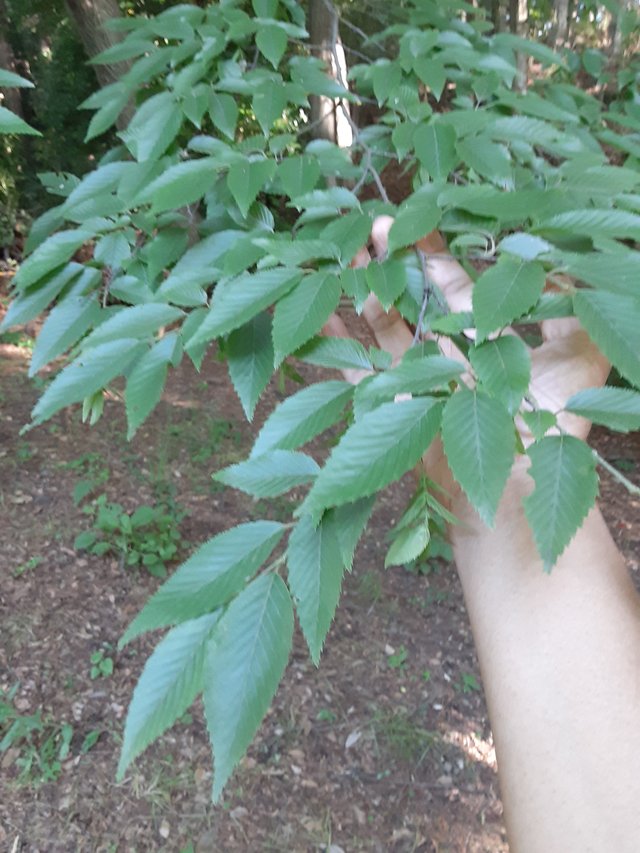
Carpinus caroliniana, also known as the American Hornbeam, is a fascinating and beautiful tree native to eastern North America. It's prized for its ornamental qualities, interesting bark, and tolerance for various growing conditions. Let's delve into the details of its captivating leaves:
Shape and Size: The leaves of the American Hornbeam are truly eye-catching. They are alternate, meaning they don't grow opposite each other on the stem, and have a simple, ovate-oblong shape with pointed tips (acuminate). Their size can vary depending on subspecies, typically ranging from 3 to 5 inches (7.5 to 12.7 cm) in length and 1.5 to 2.5 inches (3.8 to 6.3 cm) in width.
Texture and Veins: One of the most distinctive features of American Hornbeam leaves is their unique texture. They have a pronounced corrugated surface, created by prominent veins running parallel along the length of the leaf. This intricate network of veins not only adds visual interest but also plays a crucial role in transporting water and nutrients throughout the leaf.
Coloration: The American Hornbeam boasts a captivating display of colors throughout the seasons. During spring and summer, the leaves are a vibrant green, adding a touch of freshness to the landscape. As autumn approaches, a stunning transformation takes place. The leaves transition into a dazzling array of yellow, orange, and red hues, creating a breathtaking spectacle of color.
Fall Foliage: The fall foliage of the American Hornbeam is truly a sight to behold. The vibrant shades of yellow, orange, and red provide a magnificent display, adding a touch of warmth and brilliance to the autumn landscape. This vibrant display can be particularly impressive when planted in groups, creating a breathtaking tapestry of color.
Beyond Aesthetics: The leaves of the American Hornbeam play a vital role in the tree's ecosystem. They provide shade and shelter for wildlife, while also contributing to the overall health of the forest by participating in the process of photosynthesis, converting sunlight into energy for the tree's growth and development.
In conclusion, the leaves of the American Hornbeam are a remarkable combination of beauty and functionality. Their captivating shape, unique texture, and seasonal color changes make them a valuable asset in any landscape. So, if you're looking for a tree that offers year-round interest and ecological benefits, the American Hornbeam is definitely worth considering.
Ref.:
 |  |
Upvoted! Thank you for supporting witness @jswit.
Downvoting a post can decrease pending rewards and make it less visible. Common reasons:
Submit